#11th november 1918
Text
A reminder that war is pointless, and the silence and birdsong is all that the forests should hear. Not gunshots and bombs.
R.I.P to those poor souls in WW1 who lost their lives. They shall always be remembered. ❤️
#history#ww1#armistice day#remembrance day#11th november#11th november 1918#world war one#wear your poppy with pride kids
93 notes
·
View notes
Text

On this day... 11/11... I am remembering my Grandfather/Pop 'Ronald Bertrand Sumners' (always known as 'Tom') with love and sweet memories.
Lest We Forget...
First World War Embarkation Rolls:
Ronald Bertram Sumners
Service Number: 1618
Rank: Private
Roll title: 30 Infantry Battalion - 1 to 6 Reinforcements (November 1915 - April 1916)
Conflict: First World War, 1914-1918
Date of embarkation: 09 November 1915
Place of embarkation: Sydney
Ship embarked on: HMAT Beltana A72
#Lest We Forget#love#life#remembering#memories#Ancestors Alive!#What is Remembered Lives#First World War#Remembrance Day#11th November#11/11#1914-1918
4 notes
·
View notes
Text
It is time.
The eleventh hour of the eleventh day, of the eleventh month.
World War I has ended.
1 note
·
View note
Text
Adolf Hitler
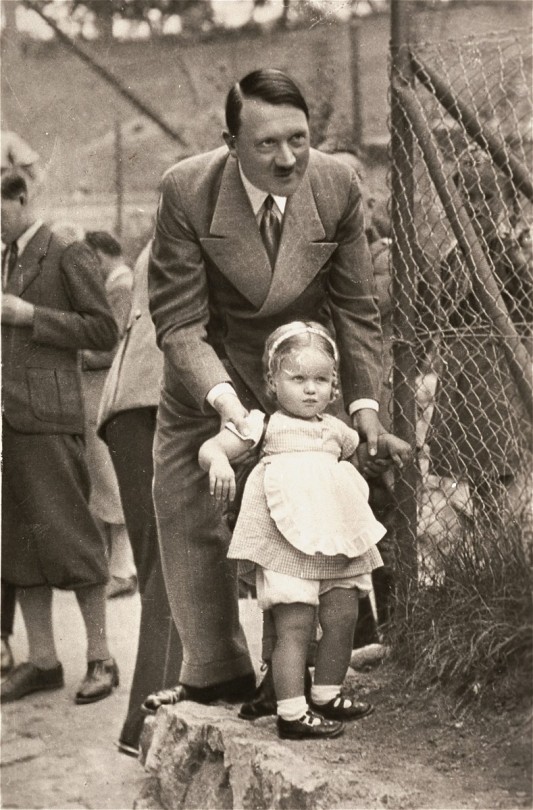
These are some facts and curiosities about Adolf Hitler:
He was born Braunau am Inn on 20 April 1889
On 16 August 1914, when the German Empire had already entered the First World War, Hitler enlisted as a volunteer at the age of 25 in the Bavarian army of Kaiser Wilhelm II, being assigned to the 1st Company of the 16th "List" Infantry Regiment, belonging to the 6th Reserve Division.
On 15 October 1918 he was subsequently temporarily poisoned by a mustard gas attack, which left him blind for three days. He was immediately admitted to Pasewalk Military Hospital where, according to some sources, he learned the news of the German defeat on November 9th.
While still in the army he was tasked with spying, on behalf of the army and the police, on the meetings of a small nationalist party, the German Workers' Party (DAP). During the session held by the political group at the Sterneckerbräu, a beer hall in center of the city, that same evening, Hitler had a violent argument with another customer.
Fascinated by his speech, Anton Drexler, the founder and secretary of the party, signed him up, without even consulting him
Hitler was not discharged from the army until 1920, after which he began to take part full-time in party activities.
He soon became its leader and changed its name to the National Socialist German Workers' Party.
A key element of Hitler's appeal to the German people was his constant appeal to national pride, wounded by defeat in war and humiliated by the Treaty of Versailles, imposed on the German Empire by the victorious states.
Hitler's success was based on conquering the middle class, hit hard by the inflation of the 1920s and the unemployment brought about by the Depression. Peasants and war veterans made up other groups that supported the Nazis.
On January 30, 1933, Hitler was sworn in as Chancellor in the Reichstag chamber, under the gaze and applause of thousands of Nazi supporters.
Using the pretext of the Reichstag fire, Hitler issued the "Reichstag fire decree" on 28 February 1933, less than a month after taking office. The decree suppressed most of the civil rights guaranteed by the 1919 constitution of the Weimar Republic in the name of national security
It is rumored that he had an incestuous relationship with his niece, Geli Raubal.
His photo was put in the Times.
When Hindenburg died on 2 August 1934, Hitler (who as already head of government, Reich Chancellor) could not also become Reich President (head of State), created a new position for himself, that of Führer which allowed him to combine the two tasks.
To demonstrate German power to the world, Hitler (on Goebbels' idea) hosted the 11th Olympiad in Berlin, with a triumphal opening ceremony. On 25 October of the same year, a treaty of friendship between the Kingdom of Italy and Germany was signed in Berlin.
Hitler personally directed the war operations, exercising a decisive influence in strategic choices and operational management.
Responsible for the death of millions of people, Hitler was the proponent of a nationalist and racist ideology, as well as a policy of discrimination and extermination that affected various ethnic, political and social groups: Slavic populations, Romani ethnic groups, Jehovah's Witnesses, homosexuals, opponents politicians, prisoners of war, the physically and mentally disabled and, especially, the Jews.
Having remained stranded with the troops loyal to him in a Berlin now surrounded by the Red Army, he committed suicide in his bunker on 30 April 1945 together with his partner Eva Braun, whom he had married the day before.
He was nominated for the Nobel Peace Prize in 1939.
Sources:
Wikipedia: Adolf Hitler
Military Wiki: Adolf Hitler
I DON'T SUPPORT NAZISM,FASCISM OR ZIONISM IN ANY WAY, THIS IS JUST AN EDUCATIONAL POST
65 notes
·
View notes
Photo

All the people of all the nations which had fought in the First World War were silent during the eleventh minute of the eleventh hour of Armistice Day, which was the eleventh day of the eleventh month. It was during that minute in nineteen hundred and eighteen, that millions upon millions of human beings stopped butchering one another. I have talked to old men who were on battlefields during that minute. They have told me in one way or another that the sudden silence was the Voice of God. So we still have among us some men who can remember when God spoke clearly to mankind.
- Kurt Vonnegut
11th November 1918. General Weygand, Admiral Wemyss and Marshall Foch after signing the armistice. The ceremony was carried out in a railway car. The actual armistice was signed at 5:12 - 5:20 AM. This photograph taken at 7.30am moments before Marshal Foch departed for Paris to hand the Armstice to the French Government.
#vonnegut#kurt vonnegut#quote#armistice day#first world war#peace#11 november#remembrance#lest we forget#war#the great war#france#germany#europe
463 notes
·
View notes
Photo
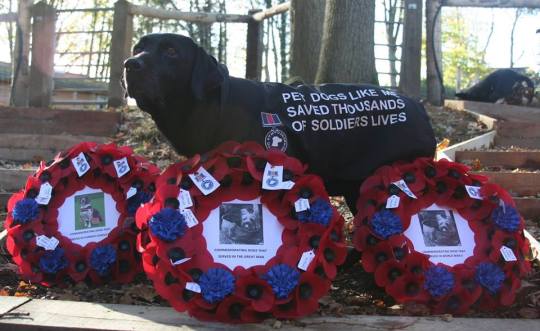
War Dogs Remembered is an organisation which pays tribute to the many dogs who worked alongside human comrades during wars. They hold remembrance services every year, one of the biggest being at Ypres, Belgium, every November 11th Armistice Day, to remember those who died in the 1918 war. This dog is wearing a coat reminding people that dogs saved thousands of human lives.
Credit, War Dogs Remembered
Thank you❤️
41 notes
·
View notes
Text
Easy Company Members Sorted Between Surviving and Not Surviving WWII:
Died During the War:
Company Commanders:
First Lieutenant Thomas Meehan III (July 8th, 1921 - June 6th, 1944)
Non-commissioned Officers:
Sergeant Warren Harold "Skip" Muck (January 31st, 1922 - January 10th, 1945)
Enlisted Men:
Corporal Donald B. "Hoob" Hoobler (June 28th, 1922 - January 3rd, 1945)
Private First Class Alex Mike Penkala (August 30th, 1924 - January 10th, 1945)
Survived the War:
Company Commanders:
Captain Herbert Maxwell Sobel (January 26th, 1912 - September 30th, 1987)
Major Richard Davis "Dick" Winters (January 21st, 1918 - January 2nd, 2011)
First Lieutenant Frederick Theodore "Moose" Heyliger (June 23rd, 1916 - November 3rd, 2001)
First Lieutenant Norman Staunton "Foxhole Norman" Dike Jr. (May 19th, 1918 - June 23rd, 1989)
Captain Ronald Charles Speirs (April 20th, 1920 - April 11th, 2007)
Junior Officers:
Captain Lewis Nixon (September 30th, 1918 - January 11th, 1995)
First Lieutenant Lynn Davis "Buck" Compton (December 31st, 1921 - February 25th, 2012)
First Lieutenant Edward David "Ed" Shames (June 13th, 1922 - December 3rd, 2021)
Second Lieutenant Robert Burnham "Bob" Brewer (January 31st, 1924 - December 5th, 1996)
Second Lieutenant Clifford Carwood "Lip" Lipton (January 30th, 1920 - December 16th, 2001)
Non-commissioned Officers:
Technical Sergeant Donald George "Don" Malarkey (July 30th, 1920 - September 30th, 2017)
Staff Sergeant William J. "Wild Bill" Guarnere Sr. (April 28th, 1923 - March 8th, 2014)
Staff Sergeant Herman "Hank, Hack" Hanson (January 3rd, 1918 - May 15th, 1971)
Staff Sergeant Denver "Bull" Randleman (November 20th, 1920 - June 26th, 2003)
Staff Sergeant Darrell Cecil "Shifty" Powers (March 13th, 1923 - June 17th, 2009)
Staff Sergeant John W. "Johnny" Martin (December 8th, 1921 - December 31st, 2012)
Staff Sergeant Floyd "Tab" Talbert (August 26th, 1923 - October 10th, 1982)
Staff Sergeant Charles E. "Chuck" Grant (March 1922 - October 12th, 1982)
Staff Sergeant Joseph John "Joe" Toye (March 14th, 1919 - September 3rd, 1995)
Sergeant Robert Emory "Popeye" Wynn Jr. (July 10th, 1921 - March 18th, 2000)
Sergeant James H. "Moe" Alley (July 20th, 1922 - March 14th, 2008)
Sergeant Wayne "Skinny" Sisk (March 4th, 1922 - July 13th, 1999)
Corporal Walter Scott "Smokey" Gordon Jr. (April 15th, 1920 - April 19th, 1997)
Enlisted Men:
Technician Fourth Grade George Luz (June 17th, 1921 - October 15th, 1998)
Technician Fourth Grade Eugene Gilbert "Doc" Roe Sr. (October 17th, 1922 - December 30th, 1998)
Technician Fifth Grade Joseph David "Joe" Liebgott (May 17th, 1915 - June 28th, 1992)
Private First Class Edward James "Babe" Heffron (May 16th, 1923 - December 1st, 2013)
Private First Class Edward Joseph "Tip" Tipper (August 3rd, 1921 - February 1st, 2017)
Private First Class David Kenyon Webster (June 2nd, 1922 - September 9th, 1961)
*This is not all of Easy Co. just some of the more recognizable names. If I missed anyone that you would like to see listed please message me and I would be glad to add him.
**I was also thinking about adding more info to this list and/or making a separate post with additional details like awards/medals, how and where they were wounded (if at all), and maybe some personal details like where they were born/died, their family (parents, siblings, spouse, children), what they did after the war (if they survived) stuff like that (though that might be a separate list idk yet). I would love to hear your opinion and if you'd like to see something like this. Basically just one large masterpost! Message me and tell me your thoughts!!!! I'm open to ideas!
#I did a thing#BoB#band of brothers#Easy Company#Easy Co#Skip Muck#Alex Penkala#Donald Hoobler#Sobel#Dick Winters#Moose Heyliger#Norman Dike#Ronald Speirs#Lewis Nixon#Buck Compton#Carwood Lipton#Bill Guarnere#Don Malarkey#Babe Heffron#Shifty Powers#Floyd Talbert#Joe Liebgott#George Luz#Eugene Roe#Joe Toye#David Webster#Skinny Sisk
29 notes
·
View notes
Text

Meanwhile in Poland....
It is possible for a country to be destroyed and then rise like a phoenix from the ashes. Poland has done it more than once....
Poland officially came into existence in the year 966, but at the end of the 18th century the Polish-Lithuanian Commonwealth was destroyed by its neighbours - Austria, Prussia and Russia - who wiped it off the map.
The first attempt to resurrect a Polish state was the creation of the Duchy of Warsaw in 1807 by Napoleon, which only lasted a few years before disappearing from the map again after Napoleon's defeat in the east.
Uprisings in 1830 and 1863 were also brutally suppressed.
But Poland was eventually resurrected after the First World War and became an independent state once more on 11th November 1918.
In 1939 the Nazis and Soviets removed Poland from the map again, and after the Second World War it remained under Soviet rule until 1989, when Poland succeeded in peacefully overthrowing Moscow's puppet regime and finally regaining its independence....
17 notes
·
View notes
Text
the larkspur family

loretta larkspur | november 20th, 1884 | scorpio | ravenclaw | @gaygryffindorgal
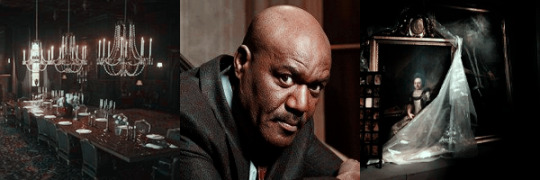
callum larkspur | june 20th, 1879 | cancer | gryffindor | @potionboy3

helene larkspur | july 22nd, 1918 | cancer | ravenclaw | @potionboy3

johannes larkspur | october 7th, 1923 | libra | gryffindor | @potionboy3

leighton larkspur | november 10th, 1924 | scorpio | slytherin | @potionboy3

hugo larkspur | december 11th, 1926 | sagittarius | gryffindor | @gaygryffindorgal

matilda larkspur | february 8th, 1902 | aquarius | hufflepuff | @potionboy3

marie-rosalie larkspur | june 6th, 1927 | gemini | ravenclaw | @gaygryffindorgal
#the larkspur family#hp riddle era#loretta larkspur#callum larkspur#helene larkspur#johannes larkspur#leighton larkspur#hugo larkspur#matilda larkspur#marie rosalie larkspur#well here they are too!!#except for marie-rosalie's dad who is ded :((
13 notes
·
View notes
Text
11th November
Martinmas

Source: The Enchanted World, The Book of Christmas, Time-Life Books
Today is Martinmas or St Martin’s Day. Martin was a fourth century saint allocated to the traditional feast day of the Roman god of wine, a debauched character called Bacchus. This probably explains the copious amount of ale and wine traditionally drunk at Martinmas and the legend that Martin could cure drunkenness. He was also the patron saint of vintners. Martin also became associated with the transition from autumn to winter. At Martinmas, in commemoration of Martin’s alleged death after being gored by a bull, cattle were slaughtered in large numbers, which in actual fact was probably a holy connection with the necessary practice of laying down salted beef to help the peasantry survive the hard medieval winters. Martin was also supposed to have given away his cloak to a beggar shivering in the winter cold. This tradition is behind the belief that on his feast day, St Martin can be seen on horseback riding across the fields and meadows bringing the first snow of winter billowing out from the folds of his cloak.
Most Martinmas traditions have been replaced by the sombre commemoration of Armistice Day in the U.K., when wreaths are laid at the Cenotaph in memory of the British dead of the two World Wars and later conflicts. The Last Post is sounded at the ceremony and a two minute silence is observed from 11am. The Armistice that effectively ended the First World War was signed at the eleventh hour of the eleventh day of the eleventh month of 1918.
10 notes
·
View notes
Text
Autumn feasts of France: La Saint-Martin
From "L'inventaire des fêtes de France d'hier et aujourd'hui"
La Saint-Martin (in English Martinmas), celebrated on the 11th of November, used to mark the end of the agricultural work and the beginning of winter in Europe. On this day, there were autumn fairs in the countryside. A thanksgiving mass was organized, followed by a heavy meal centered around a goose dish. It was during this meal that the new wine was tasted (in France there was a verb based on Martin's name, meaning "to drink the new wine": "martiner"). Just like Halloween, another celebration of this time period, Saint-Martin was, in northern France and in Germany, a day during which groups of children with lanterns walked around the town, to conjure away the dangers of the days shortening. Nowadays, the 11th of November is the day of the 1918 Armistice.
Saint Martin (the person) was famous all across Europe, and gave his name to numerous villages. More than three thousand churches and chapels in France are dedicated to him. Born in 316 in Pannonia (current Hungary), saint Martin was part of the Roman army. A famous episode of his life is how he split his coat in two, to share it with a poor man who was cold, near Amiens (in the Somme region). The following night, he dreamed that the man was actually the Christ in disguise. Converted to Christianity, he was baptized in 356 and became priest under the bishop of Poitiers, saint Hilaire. Martin founded the Ligugé abbey (in Vienna) and was elected bishop of Tours in 372. He died at Candes (Indres-et-Loire region) in 397 - his grave is still a very popular place of pilgrimage.
Martinmas was a celebration surrounded by numerous autumn traditions, and evoking the fact that the granaries and cellars were full. For example, a thanksgiving meal was organized to thank God for the harvest (or, in more pagan ways, to celebrate the harvest god). This tradition was maintained in America with the Thanksgiving celebration - when American families gather on the last Thursday of November to eat a turkey. In Dunkerque, the evening of Martinmas, children organized a procession, holding lanterns while walking behind saint Martin riding his donkey. According to the legend, children were rewarded for finding back the lost donkey of the saint - said reward took the form of pastries placed during the night on the doorway of houses, and known as "donkey poop".
#autumn celebrations#autumn feasts#saint martin#martinmas#french folklore#european folklore#french holidays#french celebrations#france
8 notes
·
View notes
Photo
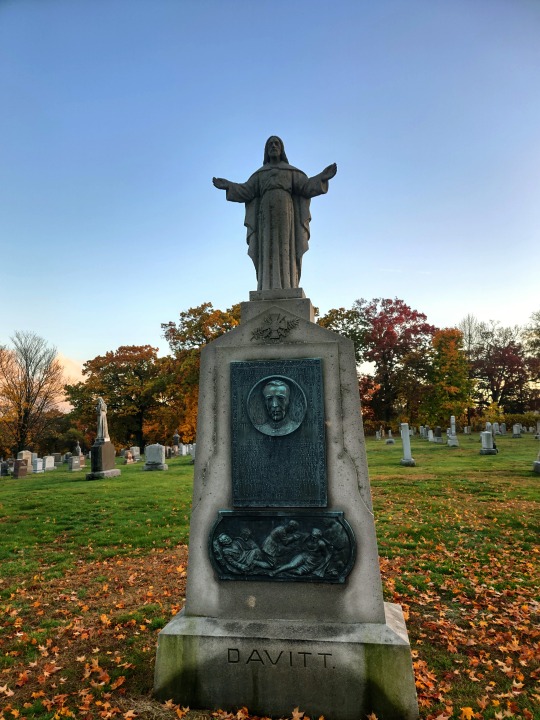
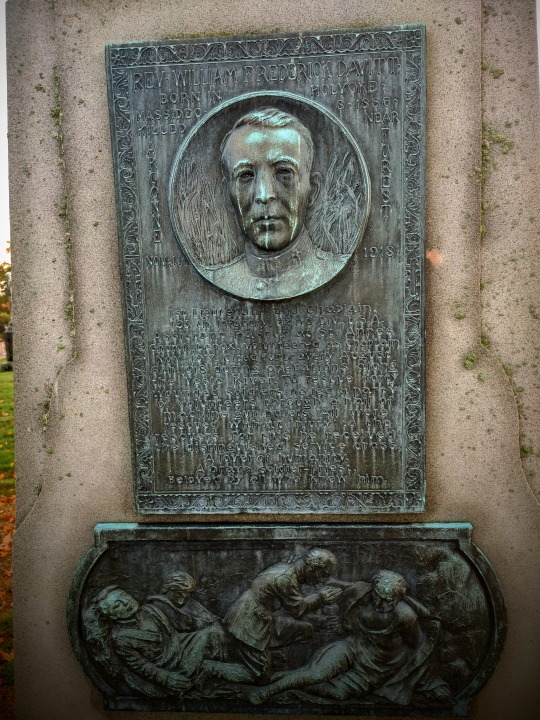
The incredible memorial to the Rev William Frederick Davitt. He was born in Holyoke MA Dec 8th, 1886. He was killed near Argonne France on Nov 11th 1918.
“1st Lieutenant and Chaplin with the 125th Infantry, 32 Div USA
Asst. pastor at St Anne’s Church, Lennox MA. Volunteered for service in November of 1917. Cited for bravery August 8th, 1918 during operations along the Yesle River. To rescue 40 wounded soldiers he led a party of volunteers through a hail of machine gun bullets. All were rescued without injury to the rescuers. For this he received the distinguished service cross.
A lover of humanity
A brave soldier-priest
Beloved by all that new him.”
Three months after his epic heroism William would also became a casualty of “the war to end all wars.”
The bottom plate shows him praying over the wounded. The portrait is haunting.
Holyoke MA10/25/22
69 notes
·
View notes
Text
(( Felt like re-writing down my Alastor's timeline, mostly for myself, but also so others have a better understanding of what it's been like. ))

April 10th, 1898: Alastor is born to Travis and Desdemona Reed-Guillory on the outskirts of Cut Off, Louisiana.
September 22nd, 1902: Alastor's sister, Josephine, is born.
April 4th, 1908: Josephine passes away after accidentally drowning in the swamp.
May 29th, 1908: Alastor finally snaps and commits his first murder: Travis, his own father. This culminated after years of physical, emotional, and mental abuse. Unfortunately, his method of murder (shotgun) also led to him accidentally killing his own mother, as well. Both enraged and heartbroken, he ran from the family cabin.
June 1st, 1908: Alastor manages to run/walk all the way to New Orleans before he collapses. Soon after, he's found by a man named Larry Landers, who decides to take him in and raise him as his own son.
April 11th, 1916: Alastor has just turned 18, and is thus eligible to be drafted into World War 1. He joins the Navy as a radio operator. This is where he's first introduced to the world of radio.
November 11th, 1918: World War 1 ends, and Alastor returns home. He gets himself a job as a waiter at a diner, but this is just a way for him to earn money; his true passion was radio.
July 23rd, 1923: WCBE-AM, a station dedicated to local coverage of big events (such as Mardi Gras celebrations), signs on for the first time. With his previous experience in the Navy, along with his charisma and charm, Alastor manages to secure himself a spot as a broadcaster.
May 28th, 1927: Alastor commits his first murder since killing his father: a man that had been positively convicted of pushing his wife down a lightwell, only to be given life with the possibility of parole and set loose a few years later on good behavior. This sense of injustice enraged him, which led to him tracking the man down and ending him personally. After that, he made it a point to keep track of other criminals who had been set loose that he deemed unworthy of their freedom so he could kill them as well.
September 16th, 1928: The station is bought by Mr. Joseph Uhalt and begins broadcasting from the Desoto Hotel in 1928, which is why the station's name is changed to WDSU (with D and S standing for Desoto and U standing for Uhalt). By this time, Alastor has risen through the ranks as one of the station's major personalities, letting him quit his job at the diner so he can focus on being a full-time broadcaster.
July 16th, 1929: One month before he was meant to be married to his fiancée of nearly one year, Alastor's would-be bride broke off the engagement, claiming she'd "gotten bored" and "found someone new". That evening, he went to her home and killed both her and her new lover. This is the one and only time he's ever killed a woman.
November 6th, 1933: While disposing of another body in the bayou outside New Orleans, Alastor was attacked by hunting dogs and then consequently shot, ending his life at the age of 35.
7 notes
·
View notes
Text
Anonymous asked: Do the French commemorate Remembrance Day and wear the red poppy to commemorate the dead?
Yes, of course they do. It’s called Armistice Day - and it’s 11 November. As time went on, the day came to mark the victims of all wars and several countries changed the name – in the UK it is now Remembrance Day and in the US it is Veterans Day – but France has stuck with Armistice Day.
The Great War officially ended with the signing of the Treaty of Versailles on June 28, 1919. But 11 November is chosen because it commemorates the signing of the armistice between Germany and the Allies that led to the ceasefire and finally put an end to World War I in 1918 - which took place at the 11th hour of the 11th day of the 11th month in 1918.
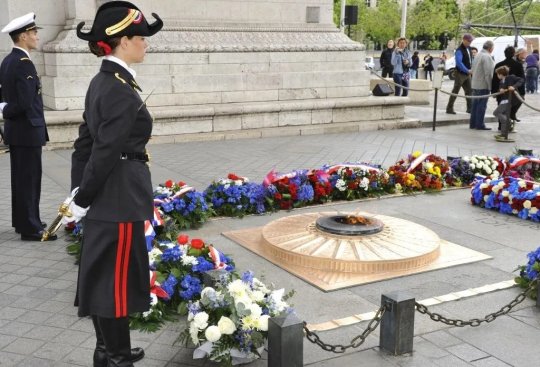
It’s a national holiday and also a time to remember the war dead. There are memorial services all over France. All municipalities, regardless of their size, have a commemorative ceremony. A wreath of blue-white-red flowers is placed on each War Memorial, which is located either on the town’s square or by the church.
The President of the Republic presides over the Parisian comemoration and lays a wreath on the Tomb of the Unknown Soldier under the Arc de Triomphe at 11am. Two consecutive minutes of silence are observed at 11am local time. The first minute is dedicated to the nearly 20 millions people who lost their life during World War One. The second pays tribute to the living left behind, the mourning mothers, wives, brides to be and sisters. It’s quite a solemn and moving ocassion.

The red poppy, synonymous with Remembrance Day in the UK, is not used however. Instead the symbol of remembrance in France is the bleuet, or cornflower.
Although it is reported that France showed solidarity with the USA in 1920 (and again, with other World War One Allies, in 1921) by wearing the Remembrance Poppy, it is the cornflower (le bleuet) which was eventually adopted as the country’s memorial flower.
The young French army recruits, who arrived at the Front from 1915 onwards, were called “les bleuets” – because of the new blue version of jackets. Thus, there was a personal French connection with the dainty blue flower - that also grew profusely on the battlefields, with the poppy. It would make sense for the French to choose the bleuet because cornflowers have traditionally symbolised “pure and delicate” sentiments.

As with the Madame Guérin’s Poppy Day idea, as an emblem of remembrance and to help victims of war, French women were behind the idea of the cornflower / le bleuet as the memorial emblem of France. They were Suzanne Lenhardt and Charlotte Malleterre. It’s more than likely that Madame Guérin knew about le Bleuet, given it was begun in Paris in 1915, when she came up with her own red poppy idea.
Suzanne Lenhardt was a nurse and her husband had been killed on the Massiges battlefield, in the Marne. Charlotte Malleterre was daughter of General Niox - who was Commander-in-Chief of the hospital ‘Hôtel des Invalides’.
The two women arranged for the maimed French veterans (“les gueules cassées”) of the ‘Hôtel des Invalides’ to make the bleuets as an aid to their rehabilitation and as a means of earning money of their own. Such an occupation was the only thing many could have coped with. As Madame Guérin, and her one-time French co-lecturer Robert Arbour, used to state whilst fundraising for these men – such men did not receive a pension when they were medically discharged.
The soldiers would craft the petals from fabric and stamens from newspapers. In the beginning, les bleuets were only sold locally, in Paris, and not on a national scale. But that has changed in recent years as it is available nationally now.
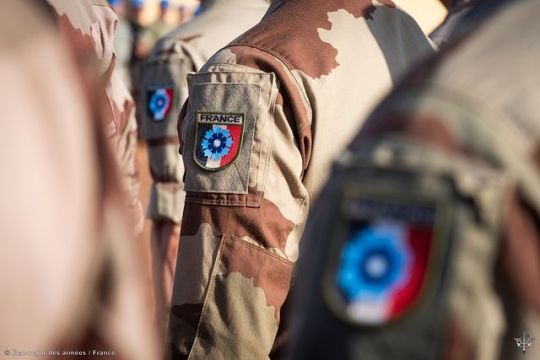
The bleuet campaign is run on behalf of the Office National des Anciens Combattants et Victimes de Guerre and supports families of servicepeople or police officers who died or were injured in service, as well as victims of terrorism. Profits from bleuet sales go to veterans’ charities. However the flower is less ubiquitous in France than the poppy is in Britain. Why that is, I don’t know. But you do see more people wearing it as the years have increasingly passed.
Alongside my poppy, I wear it as a mark of respect for my French partner’s family, but also for the country I currently make my home. It’s also a way to honour the war dead of France who sacrificed their lives for their homeland and our freedom.
Thanks for your question.
#ask#question#remembrance day#armistice day#11 november#poppy#bleuet#cornflower#war#first world war#france#memorial#commemoration#europe
54 notes
·
View notes
Note
Hi! Do you mind if I ask a question about polish holidays? A friend and I are trying to organize the Hetalia birthdays when compared to the real life national holidays, and we were absolutely stumped by Poland. He’s the only character who has 2 different birthdays listed: 22 July and 11 November. If you can explain, that would be a big help!
No probs! 22 July was a national holiday celebrated during the communist times, commemorating the manifesto of the polish committee of national liberation blah blah basically the liberation from german occupation and estabilishing a communist state. After the end of communism (1989) the day ceased to be celebrated at all and younger people don't even associate the date with anything.
November 11th is the symbolic anniversary date of Poland regaining independence in 1918 and celebrated in the interwar as well as today as the main national holiday. Using the July date in Hetalia was a curious mistake, but a mistake, and it was corrected later on I think, replaced by the November one.
Strongly recommending using November 11th for the birthday!
6 notes
·
View notes
Text

11 November 2018 | Prince William, Duke of Cambridge and Catherine, Duchess of Cambridge attend a service marking the centenary of WW1 armistice at Westminster Abbey on November 11, 2018 in London, England. The armistice ending the First World War between the Allies and Germany was signed at Compiègne, France on eleventh hour of the eleventh day of the eleventh month - 11am on the 11th November 1918. This day is commemorated as Remembrance Day with special attention being paid for this year's centenary. (c) Leon Neal/Getty Images
#Catherine#Duchess of Cambridge#Princess of Wales#Prince William#Duke of Cambridge#Prince of Wales#Britain#2018#Leon Neal#Getty Images
4 notes
·
View notes